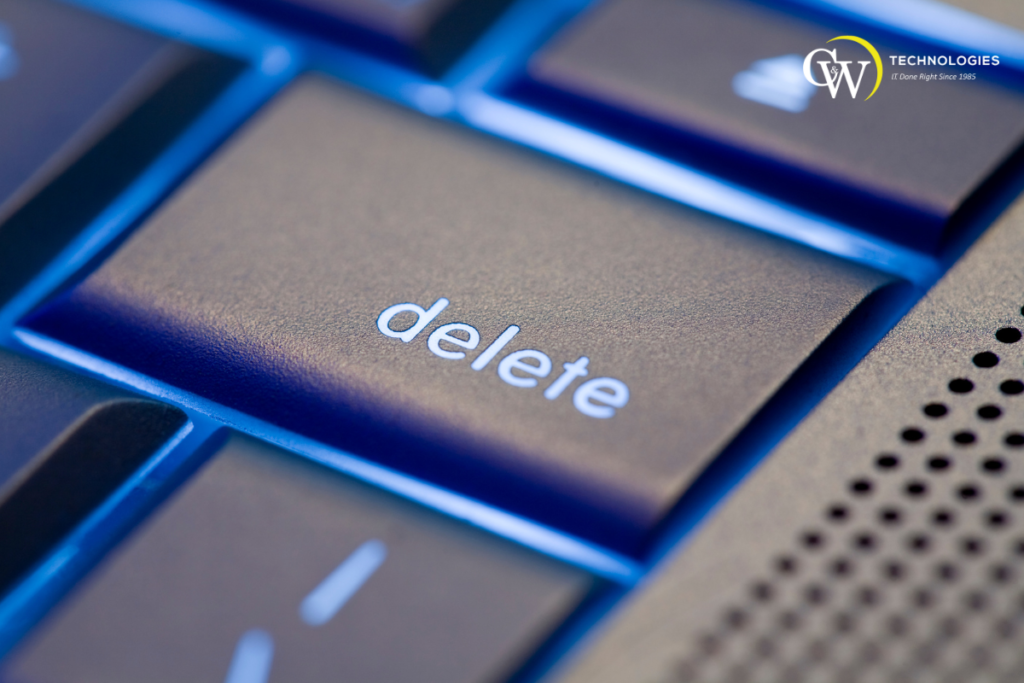Do you have sensitive data that you need to delete from your computer or external storage devices? Whether it’s personal information, financial records, or confidential documents, it is important to properly delete them is essential to safeguarding your privacy. Simply hitting the delete button or emptying the recycle bin may seem sufficient, but in reality, these actions don’t completely remove the files. Deleted files often remain on your device’s storage and can be recovered using specialized tools or software, potentially exposing your private information to unauthorized access.
In this blog post, we’ll explore why standard “delete” methods aren’t enough, the risks of leaving recoverable data, and practical steps to permanently erase your files. From understanding how file storage works to using secure data-erasure tools and techniques, we’ll guide you through the process to ensure your sensitive data is truly gone for good. By the end, you’ll have the knowledge and tools needed to protect your personal or professional information, keeping it out of reach of hackers or prying eyes. So, let’s dive in and take control of your data security!
Why Do People Delete their Computer Files?
There are many reasons why people may choose to delete their computer files. Some common reasons include:
Freeing up storage space: As we accumulate more and more digital data, our storage capacity can quickly become overwhelmed. Delete unnecessary or unused files. It is a simple way to free up space on your computer.
Organizing and decluttering: Similar to cleaning out a physical space, go ahead and delete old or irrelevant files can help keep your digital environment neat and organized.
Protecting personal information: Many people choose to delete sensitive documents or personal information in order to protect themselves from identity theft or other cybercrimes.
Ensuring privacy: Whether it’s private photos, financial records, or personal correspondence, you should delete files so it can help maintain privacy and prevent others from accessing sensitive information.
Preventing data breaches: Delete old or unnecessary files. When you do this, you decrease the risk of a data breach or leak. This is especially important for businesses that handle sensitive customer information.
Improving system performance: Delete large or unused files so that you can improve overall system performance by freeing up memory and storage space.
Resolving compatibility issues: Sometimes, deleting certain files can resolve compatibility issues with software or programs on your computer.
Updating security measures: In some cases, outdated or obsolete files may pose security risks. Regularly deleting these kinds of files ensures that your computer’s security measures are up to date.
Maintaining organization in your system: Deleting unnecessary files can help keep your computer organized and make it easier to find and access important files.
Preventing data overload: With the increasing amount of digital data we accumulate on our devices, regularly deleting unwanted files can help prevent data overload and ensure that you have enough storage space for new information.
Reducing backup time and costs: If you regularly back up your computer or device, deleting unnecessary files can reduce the time and cost associated with backing up large amounts of unneeded data.
Saving money on storage solutions: By regularly deleting unnecessary files, you may be able to save money on purchasing additional storage solutions such as external hard drives or cloud storage.
Helping the environment: By reducing the amount of storage space you need, you can also help reduce the environmental impact of producing and disposing of electronic devices and storage solutions.
Increasing productivity: A clutter-free computer or device can help improve your productivity by making it easier to find and access important files and documents.
Preventing data breaches: If you have sensitive information stored on your computer or device, regularly decluttering can help reduce the risk of a data breach in case your device is lost or stolen.
Improving performance: Deleting unnecessary files can free up valuable space on your computer or device, which can lead to improved performance and faster processing speeds.
How Can I Safely Delete My Files?
When it comes to decluttering, it’s important to safely wipe. Simply deleting files doesn’t always permanently remove them from your device, leaving the possibility for sensitive information to be recovered by others. Here are some tips for safely deleting your files:
Use a file shredder program: These programs are specifically designed to permanently delete files by overwriting them with random data multiple times, making them nearly impossible to recover.
Encrypt sensitive files before deletion: This adds an extra layer of security by scrambling the data in the file, making it unreadable without a decryption key.
Use secure erase on solid state drives (SSDs): SSDs store data differently than traditional hard drives and simply deleting a file may not completely erase it. Using the secure erase function on SSDs ensures that all data is thoroughly wiped.
Utilize cloud storage services: Storing important files in the cloud can provide an extra level of protection, as they are stored off-site and often have their own security measures in place.
Always double-check before deleting: It’s always a good idea to double check which files you are about to delete before clicking that final ‘delete’ button.
Keep backups of important files: In case something does go wrong during deletion, having a backup copy of your important files can save you from losing them permanently.
Be aware of file sharing permissions: When working with others, be mindful of the file sharing permissions that you have set. Make sure to only give access to those who need it and regularly review and update these permissions.
Use version control: If you are collaborating on a project or making regular changes to a document, version control can help you keep track of different versions and revert back if needed.
Keep your computer and online accounts secure: It’s important to keep your devices and online accounts secure by using strong passwords, enabling two-factor authentication, and regularly updating security software.
Consider physical backups: While cloud storage is convenient, it’s always a good idea to also have physical backups of important documents or files. This can include external hard drives, USB drives, or even making physical copies of important documents.
Utilize productivity and organization tools: There are many tools available to help with productivity and organization, such as project management software, task lists, and calendar apps. These can help you stay on track and manage your time effectively.
How Will I Know for Sure My Data is Deleted?
It is important to have a system in place to confirm that your data has been successfully deleted. Some steps you can take include:
Perform periodic checks: Make it a habit to regularly check your devices and storage locations for any leftover files or data.
Use data erasure software: There are specialized software programs available that can securely erase your data and provide confirmation of the deletion.
Request proof from service providers: If you have used a third-party service provider, such as a cloud storage platform, make sure to request confirmation that your data has been completely removed from their servers.
By taking these precautions, you can ensure that your sensitive information is truly removed and cannot be recovered by unauthorized parties.
Who is C&W Technologies?
C&W Technologies is an IT company that provides innovative solutions and services to businesses and individuals. We are known for their expertise in project management, task organization, and data security. Our goal is to help clients increase productivity, streamline processes, and improve overall efficiency through the use of advanced technology. With years of experience in the industry, C&W Technologies has become a trusted partner for businesses looking to stay ahead in the constantly evolving world of technology. Through our commitment to providing top-quality services and products, we have earned a reputation as a reliable and customer-oriented company.
Contact Us!
If you are interested in learning more about our services or how we can help your business grow, please don’t hesitate to contact us. Our team of experts is always happy to answer any questions and provide customized solutions for your specific needs.
You can get in touch with us through our website, where you can find more information about our company and the services we offer. You can also reach us by phone or email, and one of our representatives will be glad to assist you.
We value communication and collaboration with our clients, as it allows us to better understand their goals and create tailored solutions that meet their unique requirements.
Frequently Asked Questions (FAQ’s):
Q: What are multiple files?
A: Multiple files refer to more than one file saved on a computer system.
Q: How can I organize files?
A: You can organize your files by using the file management features of your operating system or by using a files app.
Q: What is a file format?
A: A file format is the way in which data is stored and structured within a digital file, such as .docx for Microsoft Word documents or .mp3 for audio files.
Q: Can I download files of different types?
A: Yes, you can download various types of files, such as text documents, images, videos, and more.
Q: How do I open a file with a specific program?
A: To open a file with a specific program, right-click the file, select “Open With,” and choose your desired program. You can also set a default program for certain file types in your system settings. Some programs allow you to open files directly within the app. Check the program’s instructions for details.
Q: Can I edit files after downloading them?
A: Yes, depending on the type of file and the permissions granted by its owner, you can usually edit downloaded files. For example, if you download a Word document, you can make changes to it using Microsoft Word or a similar program. However, if you download a PDF file, you may be able to make minor edits using specific software, but in most cases, the document will remain read-only.


